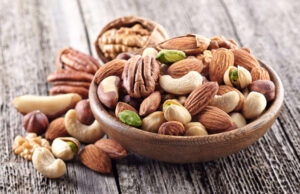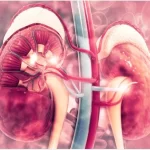Iron is vital for the human body, playing a crucial role in transporting oxygen in the blood, supporting the immune system, and facilitating liver function. Iron deficiency anemia can lead to detrimental effects, including fatigue, dizziness, and shortness of breath during physical activity. Severe anemia poses a significant health risk.
Below is a list of 20 foods that are rich in iron to help you avoid this condition.
Dried fruit

Although dried fruit is high in sugar, it also has its benefits. For instance, dried apricots boast 6.31 mg of iron per 100 grams. Consider chopping dried fruit into bite-sized pieces to add flavor to oatmeal, or savor it as a standalone snack!
Poultry

It’s estimated that around 17% of the global population is affected by iron deficiency. Regular consumers of chicken, particularly, tend to avoid this issue. While white meat is beneficial, dark meat from chicken legs and thighs is superior for optimal iron intake. Combine this with leafy greens and a whole grain like barley for a well-rounded meal.
Grains

To enhance your diet with iron, choose unrefined whole grains such as rice, barley, oats, and wheat. These grains are not only beneficial for your health but are also high in fiber, which promotes a feeling of fullness. This, in turn, can help prevent overindulgence in less nutritious sweet treats.
Fish and seafood

Fish and seafood may contain as much as 23.8 mg of iron per 85 grams. The vast array of options within this excellent iron source allows for a multitude of preparation methods to suit any preference.
Eggs

Eggs are incredibly versatile. They can be prepared in numerous ways and incorporated into a vast array of both sweet and savory dishes. Additionally, they are a rich source of both heme iron, which is derived from animal products, and non-heme iron, which comes from plant sources. Having both forms present enhances the body’s ability to absorb this essential nutrient.
Red meat

The human body absorbs iron more efficiently from animal sources than from other forms. Therefore, feel free to include meats like beef, pork, horse, or bison in your diet. To enhance iron absorption, pair these with a source of iron from vegetables and a bit of vitamin C, like an orange, to conclude your meal.
Offal

While some individuals are hesitant to try it, offal is replete with health benefits. These meat cuts are not only abundant in iron but also in vitamin B, zinc, uric acid, among others. However, individuals with cardiovascular issues should steer clear of this type of food.
Vegetables

Since the body cannot produce iron, it is essential to include it in our diet. Luckily, a variety of foods are rich in this nutrient, particularly vegetables. Try sautéing a generous serving of spinach with a bit of butter, or quickly blanching peas before pan-frying them. Pair it with a lean protein for a well-rounded meal.
Seeds

Seeds are not only a rich source of iron but also provide a multitude of health benefits. They are packed with essential vitamins and minerals, high in fiber, and are a tasty addition to any diet. Consider trying butters made from pumpkin, sesame, or sunflower seeds, or combine them with dried fruit for a nutritious snack to keep you satisfied between meals.
Game birds

The term “game bird” refers to any bird that is hunted, with many species being high in iron. The pheasant, for instance, is also abundant in vital nutrients such as vitamin B, phosphorus, and potassium. Typically, pheasant is cooked in the same manner as chicken, meaning it is roasted and accompanied by vegetables.
Seaweed

Edible seaweed is known for its high iron content, surpassing many vegetables and legumes, and it’s rich in various minerals and vitamins. While nori is widely recognized, other varieties like sea lettuce, kombu, and wakame are also worth trying for their delightful addition to salads.
Molasses

Molasses contains nearly 5 mg of iron per 100 grams. In fact, its benefits are no less substantial than its sweet taste. Molasses also contains a significant amount of calcium, magnesium, and potassium. Enjoy it in a glass of milk, on toast, or in tasty muffins.
Tofu

Protein-packed tofu serves as an excellent substitute for meat in various recipes. Its relatively bland taste adapts to the flavors it’s combined with. Additionally, tofu is low in fat and a source of vitamins A, B, D, and E. It’s worth noting that firm tofu has greater amounts of iron and calcium compared to silken (soft) tofu.
Dark chocolate

Dark chocolate is a treat that not only delights food enthusiasts but also offers numerous health benefits. However, it’s important to note that only dark chocolate with at least 70% cocoa content is deemed healthy. Cocoa provides 13.9 mg of iron per 100 grams. Savoring it in a fondue accompanied by fresh fruit can make for an indulgent yet balanced dessert.
Fruit

Certain fruits are excellent sources of iron. Even fruits that do not contain iron can aid in maintaining adequate iron levels, as vitamin C enhances the body’s absorption of this nutrient. Fruits can be consumed fresh, blended into smoothies, or used in a variety of desserts.
Legumes

Similar to tofu, legumes are rich in fiber and protein, making them an excellent meat substitute. They are also packed with iron and vitamin B. Moreover, the versatility of legumes allows them to be savored in a variety of dishes such as soups, salads, sandwiches, and beyond. Unleash your culinary creativity!
Nutritional yeast

Nutritional yeast, a dehydrated, inactive yeast, is available as a flaky yellow powder. With a savory taste often likened to cheese, it’s versatile enough to enhance the flavor of virtually any dish or to be used as a topping on popcorn. A quarter-cup serving of nutritional yeast contributes 8% of the recommended daily value for iron.
Potatoes

Whether mashed, boiled, or baked, potatoes make a delightful side dish to accompany your proteins and vegetables. They are a good source of iron, vitamins, and various minerals. Enjoying them oven-baked with their skin on is arguably the best method.
Flour

This ingredient is a staple in numerous recipes, such as bread, pasta, sauces, and cakes. In some countries, like the United States, it is mandatory to fortify it with iron and additional minerals, rendering flour a more healthful and nutritious option.
Nuts

Nuts are a powerhouse of energy, packed with protein, vitamins, and minerals. For every 100 grams, nuts can provide as much as 6.68 mg of iron. They can be enjoyed on their own, paired with dried fruits, blended into smoothies, incorporated into desserts, or used as an addition to meat dishes.
Source: https://www.msn.com/



